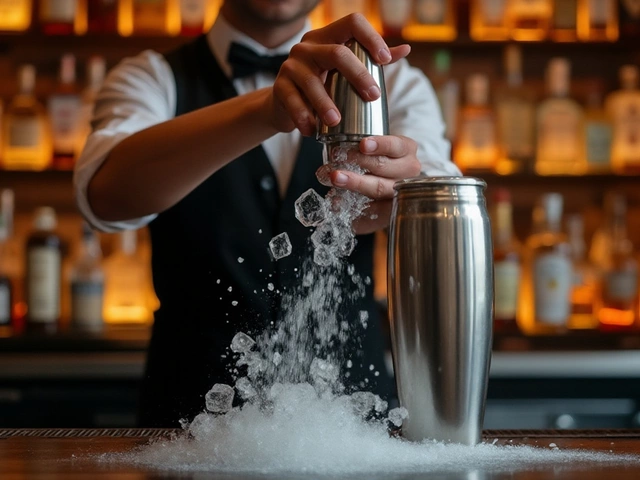Whiskey Tips: How to Taste, Pair, and Enjoy Whisky
If you’ve ever stared at a bottle of whisky and felt clueless, you’re not alone. The good news? Whisky isn’t a mystery you have to solve with a chemistry degree. A few simple habits can turn a random sip into a real experience. Below you’ll find the most useful tips, from getting your palate ready to matching food that makes the spirit shine.
Get Your Palate Ready
First thing’s first: clear your mouth. A glass of water, a plain cracker, or even a bite of plain cheese does the trick. Avoid strong flavors right before a tasting – coffee, mint, or spicy snacks can mask the subtleties you’re trying to hear.
Next, choose the right glass. A tulip‑shaped whisky glass or a Glencairn focuses the aromas toward your nose, making it easier to pick out notes like vanilla, fruit, or smoke. Hold the glass by the stem, not the bowl, so your hand heat doesn’t warm the whisky.
Take a quick sniff before the first sip. Don’t overthink it; just notice the first impression. Is it sweet, smoky, woody? That first sniff sets a mental map for what you’ll taste. Then, bring the glass to your nose again after each sip – the aroma evolves as the liquid opens up.
When you drink, let the whisky linger on your tongue. Let it roll over all taste zones – sweet front, bitter back, and the middle where you feel the texture. Try a “nose‑back‑finish” approach: sniff, sip, then exhale through your nose to capture the finish. This simple routine reveals hidden spices or a lingering oak that you might miss otherwise.
Pairing Whisky with Food
Food can boost a whisky’s character, but the pairing isn’t about matching colors – it’s about balance. Think of the whisky’s dominant note and find a food that either complements or contrasts it.
For a smooth, fruity Speyside, pair it with light cheeses like brie or a fruit‑based dessert. The creaminess lets the fruit shine, and the dessert’s sweetness won’t overwhelm the delicate spirit.
If you’ve got a smoky Islay, go bold. Charred steak, smoked salmon, or even dark chocolate works because the strong flavors can stand up to the peat. A little salt also helps tame the smoke and draws out a sweeter finish.
Peaty whiskies love a little acidity. A slice of pickled apple or a vinaigrette‑dressed salad can cut through the heaviness and make the whisky feel fresher. The key is to keep portions small – you want the food to support, not dominate, the drink.
Don’t forget temperature. Warm drinks, like a hot toddy, can mute a whisky’s complexity, while a chilled whisky (just a few minutes in the fridge) can tighten the flavors, especially for younger blends. Experiment and note what works for your taste.
Finally, keep a tasting notebook. Jot down the whisky, the food, and what you felt. Over time you’ll spot patterns – maybe you always love a hint of honey with bourbon‑style whiskies, or you prefer a dry cracker before a high‑proof cask strength.
These tips won’t turn you into a sommelier overnight, but they’ll make every dram feel more intentional. Remember, whisky is meant to be enjoyed, not over‑analyzed. Grab a glass, try these steps, and you’ll discover why the world loves this spirit so much.
Curious about what really happens at a whiskey tasting? This article breaks down what to expect, how to taste whiskey like a pro, and what little details make these events more interesting than you might think. From picking up new skills to figuring out when and what to say, here’s a straight-talking guide that skips the pretentious stuff. Whether you’re headed to your first tasting or just want to stop nodding along cluelessly, you’ll know exactly what to do by the end.
View Details

